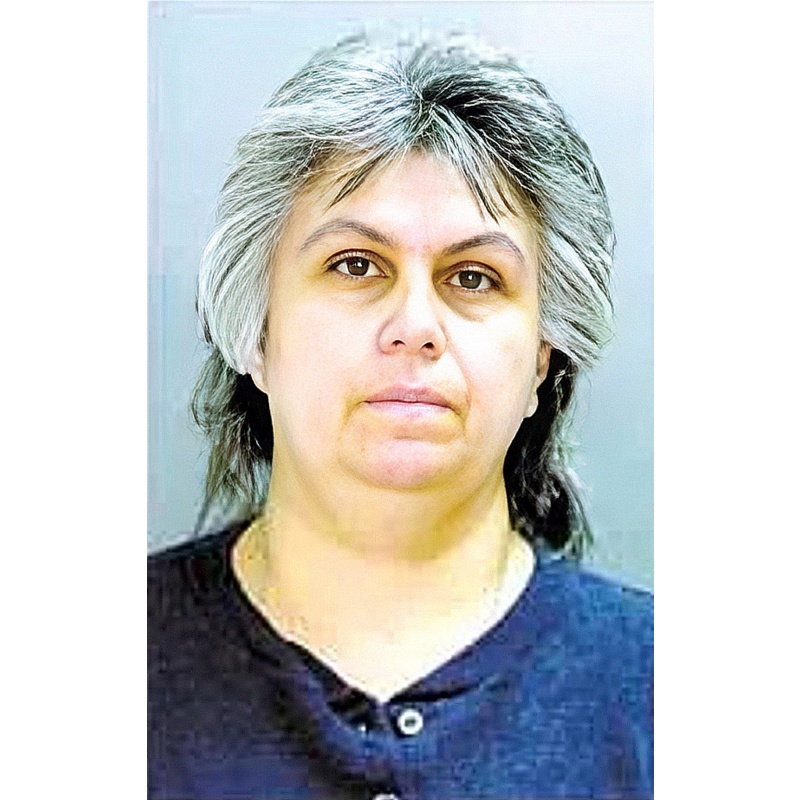DIANE O'DELL | 'The Babies in Boxes Murder Case' | American Female Serial Killer Who Murdered Her Illegitimate Infants By Asphyxiation | Autographed Letter Signed
LongfellowSerenade 28
Diane O'Dell, an American serial murderer, was found guilty of murdering three of her twelve children. The case began in 2003, when the bodies of three infants were found in a storage facility in Safford, Arizona. O'Dell stated that the kids died during birth between 1981 and 1984. After their deaths, she kept their bodies hidden for nearly a decade, demonstrating a tremendous level of denial. During her trial, O'Dell was charged with three charges of first-degree murder but was convicted guilty of just second-degree murder. She was condemned to life without parole until 2029. The case is a sobering reminder of mental health difficulties, cultural pressures, and the devastating effects of untreated psychological discomfort.
$60.00
- Postage
-
Standard Shipping
$0.00 to United States
Get Additional Rates
- Select Country
- Zip/Post Code
- Quantity
Description
D. Odell. Autographed Letter, Signed. Handwritten, Commercial #10 (4.125 × 9.5 envelope). Westchester, NY. February 5, 2025. Content unknown. SEALED.
The Dark Secrets of Diane O’Dell:
A Mother’s Deadly Betrayal – A Case Study of Infanticide
Background Information
Diane O’Dell, born in 1953, is an American woman who became infamous for her actions as a serial killer. She was convicted of murdering three of her children among the twelve she bore. The circumstances surrounding her case are particularly disturbing, as it involves the concealment and transportation of the corpses of her deceased newborns over a span of years.
Discovery of the Crimes
The investigation into Diane O’Dell’s actions began when the bodies of three infants were discovered in May 2003 within a storage unit that she had rented in Safford, Arizona. These infants were found after O’Dell defaulted on her rent, leading to the clearing out of her possessions by the landlord. The discovery shocked local authorities and raised questions about O’Dell’s past and the fate of her children.
Motive and Methodology
O’Dell reportedly murdered these infants because they were born out of wedlock. She claimed that all three babies died at birth between 1981 and 1984. After their deaths, she kept their bodies stored away for over a decade, traveling with them across state lines while moving frequently throughout various locations in New York and other states. This behavior indicates a profound level of denial or detachment from reality regarding her actions.
Legal Proceedings
During her trial in 2003, Diane O’Dell faced three counts of first-degree murder; however, the jury ultimately found her guilty only of second-degree murder. In 2004, she was sentenced to life imprisonment without the possibility of parole until 2029. This outcome reflects both the gravity of her crimes and the complexities involved in proving intent and premeditation in cases involving infanticide.
Public Reaction and Media Coverage
The case garnered significant media attention due to its shocking nature. Neighbors described O’Dell as a seemingly caring mother who was well-liked within her community, which added an element of disbelief to the revelations about her criminal activities. Reports highlighted how people were stunned by the contrast between O’Dell’s public persona and her hidden actions.
Conclusion
Diane O’Dell’s case serves as a grim reminder of the complexities surrounding mental health issues, societal pressures regarding motherhood, and the tragic consequences that can arise from untreated psychological distress. Her story raises important questions about support systems for mothers facing difficulties and how society addresses issues related to infanticide.
VIDEO: Babies TRAPPED in Storage: Tales from a Twisted Nursery | https://youtu.be/RUdx2dEakt8
Archiving Protocol:
• Handled with White Gloves ab initio
• Photo Pages/Sheet Protectors: Heavyweight Clear Sheet Protectors, Acid Free & Archival Safe, 8.5 × 11, Top Load
• White Backing Board – Acid Free
Shipping/Packaging: Rigid Mailer 9.5 × 12.5. White, self-seal, stay-flat, Kraft cardboard, no bend. Each rigid mailer is made of heavy cardboard, which has strong resistance to bending and tearing. Thicker than the USPS mailers. Shipping cost never more than it absolutely has to be to get it from me to you.
Payments & Returns
- Payment Methods
- PayPal, Money Order
Postage & Shipping
- Item Location
- 49858, Michigan, United States
- Ships To
- Worldwide
- Pick-ups
- No pick-ups
- Shipping Instructions
- Shipping costs to international destinations will be applied to this auction. Please contact us if you have any questions about shipping to your location.
- Returns Accepted
- No




-800x800.jpg)
-800x800.jpg)

-500x500.jpg)

-500x500.jpg)

